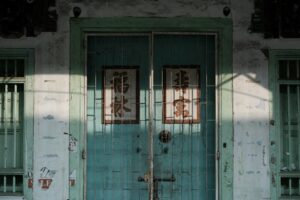Measuring Operational affordability of public low-cost housing in Kuala Lumpur Malaysia
Introduction:
Affordability in housing is often defined by the ratio of purchase price or rent, to total household income. At present, public low-cost housing units in Malaysia are sold or rented at below market price value being subsidized by the government. This housing affordability definition overlooks other important issues such as long-term operational costs, where a typical low-income household spends a substantial share of monthly income on energy and utility services such as electricity and water. Consequently, the apportionment or percentage of average household income spent on operational household expenditure such as rent, electricity and other utilities are investigated in this paper, by using a survey questionnaire and interview techniques. This paper presents a brief overview to how low-cost housing can contribute to sustainable development in terms of long-term operational affordability for social and economical sustainability.

Rapid urbanization and the scale of new buildings constructed in Malaysia demonstrate an urgent need for change in policy and mode of operation. The government’s response to the increasing housing demand in urban areas for the lower-income population is manifested through low-cost housing projects, in subsidized sale price and/or low monthly rental. This current definition of low-cost housing excludes other operational costs such as energy and water utilities, therefore long-term affordability remains uncertain. Consequently, operational affordability of public low-cost housing, in terms of apportionment/percentage of average household income spent on operational household expenditure such as rent, electricity and other utilities is reported in this paper.
Definition of public PPR low-cost housing in Malaysia:
This paper is concerned with public low-cost housing under the National Economic Action Council (NEAC) People’s Housing Programme or Program Perumahan Rakyat (PPR). The PPR is the national standard of public low-cost housing projects, coincidently significant in its percentage of construction. Public low-cost housing units are subsidized between 30 to 70% of the total construction cost by the government. According to the Ninth Malaysia Plan, public low-cost housing represented approximately 192,000 units (31%) of Malaysian’s annual housing target between 2001-2005. However the actual low-cost housing units built by the public sector between 2006-2010 dropped to only 85,000 units per year, representing 27.9% total housing).
Effectiveness of PPR low-cost housing projects – Affordable and Sustainable Urban Housing?:
The subject of sustainable low-cost housing has not been the focus of policy makers in Malaysia. In relation to the triple-bottom-line approach of sustainability, elements of environmental, economic and social dimensions are the starting point. Past research into low-cost housing in Malaysia mainly focused on post occupancy evaluation, in terms of satisfaction level of dwelling unit features, surrounding services and utilities, social and neighbourhood environment. There is a clear gap in environmental research for this specific residential typology in Malaysia. However, this paper is limited to reporting only on the economic and social features of sustainability of PPR low-cost housing projects in Malaysia, while subsequent papers reporting on environmental aspects of sustainability is being written concurrently.
Monthly Electricity and Other Utilities Expenditure:
Based on the survey findings, the majority of households (85%) spend no more than RM 100 per month on electricity. About 44 % of households spend less than RM 50 a month and 41% spend between RM 50 to RM 100 a month on electricity. Therefore, a combined average of approximately 98% of households surveyed spends no more than RM 200 a month on electricity. In comparison with the average household income range of RM 1000 to RM 2500 a month, 10% affordability should lie between RM 100 and RM 250 a month. This suggests that electricity is affordable for the sample size surveyed.
Conclusion:
Based on this analysis, the percentage associated with energy and other utility costs is within the range of the international average of 10% and 6% of household income, respectively. Additionally, in calculating the combined average expenditure for both electricity and other utilities, the mode was calculated to be approximately RM 100 a month. This consequently shows that the combined operational costs for electricity and other utilities is approximately 10% of average household monthly income.
